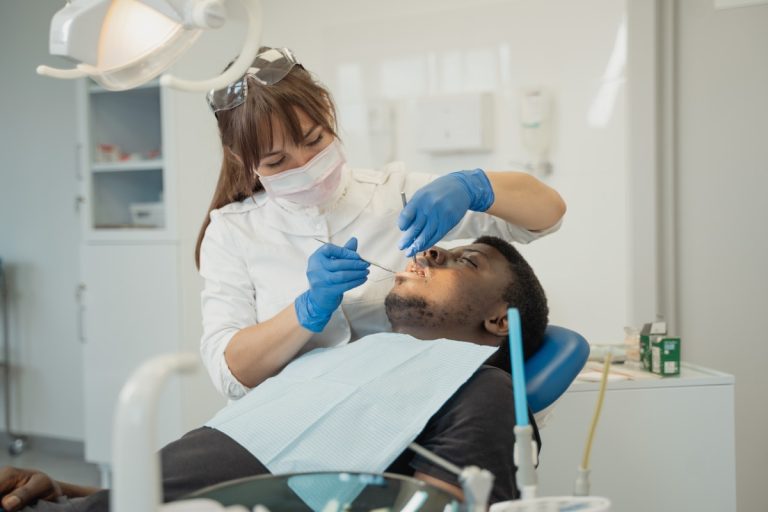- Technology has revolutionized the dental industry and improved patient experience with digital X-rays, intraoral cameras, and new treatment options.
- Online appointment booking is now increasingly popular, offering greater flexibility and convenience.
- Teledentistry allows patients to access a dentist online for consultations and treatment plans.
- With increased accuracy and speed, CAD/CAM technology enables dentists to design, mill, and install customized dental prostheses in hours.
The dental industry has come a long way in adopting new and advanced technologies that have positively impacted dental professionals and patients. Technology has enabled dental professionals to offer more personalized treatments, faster appointments, better diagnoses, and reduced patient pain and discomfort.
This blog post will discuss how technology has reshaped the dental industry and why keeping up with the latest technological advancements in dentistry is vital.
Improved Patient Experience
One of the most significant impacts of technology in the dental industry is improved patient experience. Technology allows patients to enjoy a more comfortable and less invasive experience. Dentists can provide more precise diagnoses and treatment plans with digital X-rays and intraoral cameras. Digital dentistry has also resulted in faster and more accurate diagnoses, reducing patients’ waiting time.
In addition, technological advances have opened up a wide range of new treatment options. From dental implants to laser dentistry, the latest technologies allow dentists to provide better services with improved accuracy and comfort.
Online Appointment

Technology has revolutionized many aspects of dental offices, with online appointment booking becoming increasingly popular. Making an appointment takes just a few clicks, and the dental office can easily adjust and manage their schedules accordingly. With technology now offering dental offices greater flexibility and convenience, dental care is more accessible.
In addition, dental practices across the country can benefit from increased efficiency associated with online appointment booking. Registering for an appointment online saves time for both patients and dental providers; this is particularly valuable when it comes to accommodating new or same-day appointments that would otherwise be impossible to add to busy schedules.
Ultimately, the widespread integration of online appointments in dental care is one of the many remarkable achievements of modern-day technology in dentistry.
Teledentistry
Teledentistry is a modern approach to dental care that allows you to access a dentist without stepping out of your home. You can consult a dentist online, who can provide you with a diagnosis and treatment plan. However, teledentistry is a relatively new concept, and many people are still skeptical about its effectiveness. Here’s everything you need to know about teledentistry and how it will shape the future of dentistry.
What is Teledentistry?
Teledentistry is digital technology enabling dentists to deliver online consultation and treatment services. You can receive dental services with teledentistry without physically visiting a dental clinic. You can communicate with a dentist in real time via video, audio, or chat without leaving your home.
How Does Teledentistry Work?
Teledentistry is straightforward. You only need an internet connection and a device with a camera and microphone, such as a smartphone, tablet, or computer. Once you have your equipment, you can book an appointment with a dentist, who will connect with you via video conferencing software.
CAD/CAM Technology
The introduction of CAD/CAM technology is a prime example of how technology has revolutionized dental care. With CAD/CAM technology, dental professionals can design, mill, and install customized dental prostheses in hours.
What is CAD/CAM technology in dentistry?
Computer-Aided Design (CAD) and Computer-Aided Manufacturing (CAM) technology are advanced digital technologies used in the dental industry to design, fabricate, and install dental restorations like crowns, veneers, bridges, and inlays/onlays. These technologies replaced the traditional fabrication process that relied on manual labor and physical molds for producing dental restorations.
- CAD/CAM technology in dentistry involves:
- Non-invasive digital scanning of the patient’s teeth or oral impression
- Designing the restoration using 3D software
- Manufacturing the restoration using a range of milling or printing techniques
- Installing the restoration in the patient’s mouth
Benefits of CAD/CAM technology in dentistry

One of the most significant benefits of CAD/CAM technology is that it improves the accuracy and speed of dental restoration fabrication. Other benefits include:
- Reduced the need for multiple visits to the dentist
- Faster turnaround times
- Reduced labor costs for dental labs
- Increased precision in restoration design and fit
- Enhanced aesthetics for patients due to custom-tailored restorations that fit perfectly
- Better long-term durability and functionality of the restorations
Final Thoughts
Technology has made significant strides in the dental industry, making it more personalized, efficient, and comfortable for patients. Dental professionals can provide more precise, personalized, and faster treatments with new and emerging technologies such as digital X-rays, teledentistry, and CAD/CAM technology. With technology continuously advancing, it is essential for dentists to stay up-to-date and use the latest technologies in their practice. This will help them offer better care to their patients and keep up with the competition.

